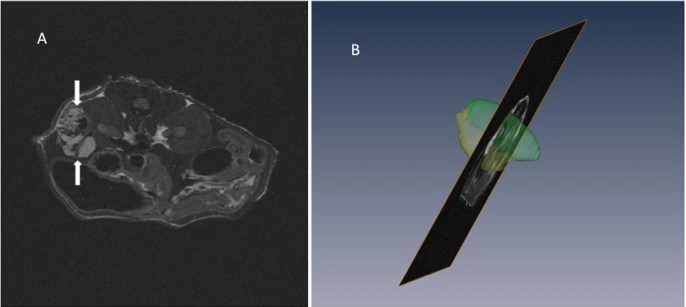Ultrasound Molecular Imaging of Renal Cell Carcinoma: VEGFR targeted therapy monitored with VEGFR1 and FSHR targeted microbubbles
Recent treatment developments for metastatic renal cell carcinoma offer combinations of immunotherapies or immunotherapy associated with tyrosine kinase inhibitors (TKI). There is currently no argument to choose one solution or another. Easy-to-use markers to assess longitudinal responses to TKI are necessary to determine when to switch to immunotherapies. These new markers will enable an earlier adaptation of therapeutic strategy in order to prevent tumor development, unnecessary toxicity and financial costs. This study evaluates the potential of ultrasound molecular imaging to track the response to sunitinib in a clear cell renal carcinoma model (ccRCC).

The rationale for this study is that tumor molecular changes occur before vascularization changes and tumor shrinkage following VEGFR targeting therapies. Therefore, we investigated the differential expression of two molecular markers, VEGFR-1 and FSHR, between sunitinib and control groups of mice engrafted with patient-derived xenografts (PdX) of RCC during 4 weeks of treatment. We hypothesized that USMI signals and perfusion imaging parameters would be significantly lower in the treated group compared to the control group during the longitudinal follow-up US examinations (at weeks 1, 2 and 4 after initiation of sunitinib)